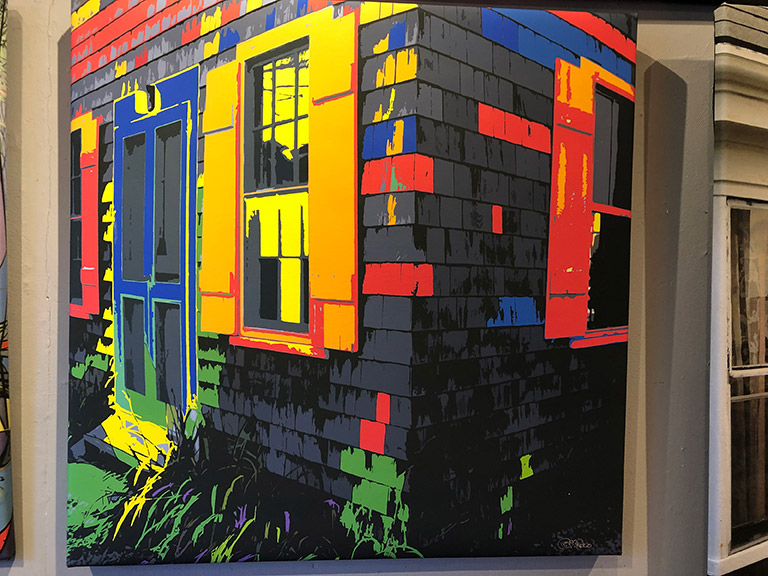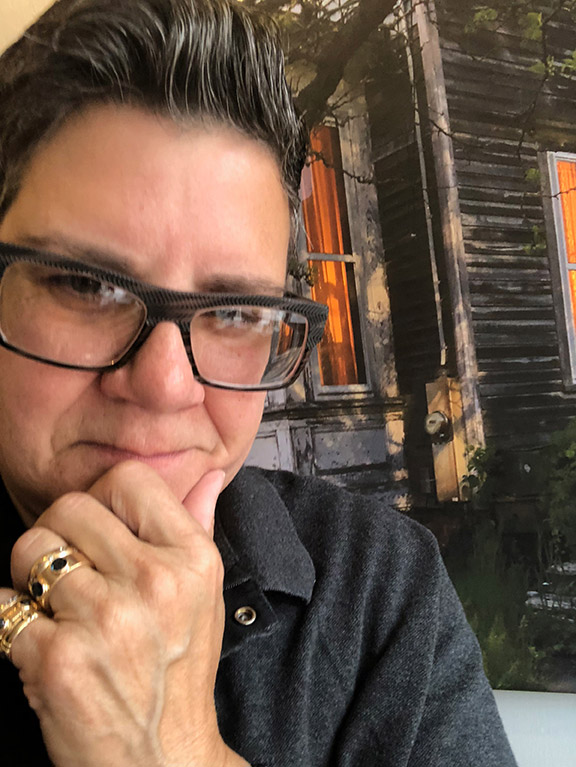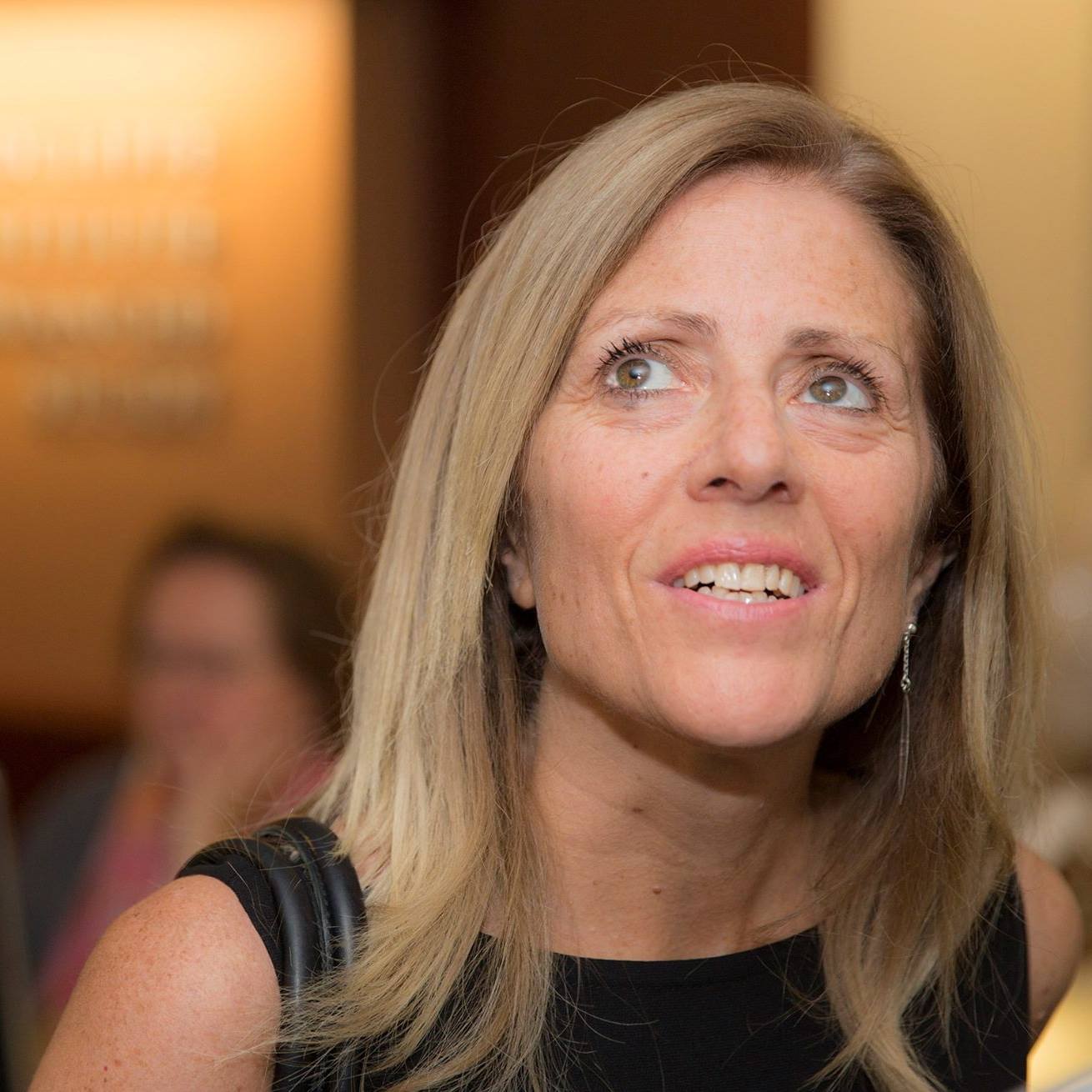With a Polaroid Swinger and a high school photography class, Angela Russo found her passion, or rather it found her.
By the time she was a high school senior, Russo had mastered three instruments and envisioned a career in music. Then her “true secret dream of becoming a photographer” surfaced. “That is where I saw my first Edward Steichen, Alfred Stieglitz and Edward Weston images,” she said.
“My eldest brother, Joseph, who was an engineer for Kodak gave me a very good 110 film camera. I learned how to print black-and-white images. Then I borrowed a true adjustable 35mm camera. I began to experiment with double exposures and alternative processes. Right after I graduated high school [in 1974], I went on a cross-country trip. I photographed everything!
“Unfortunately, there was no place to process the film I shot, so I just collected it in a bag.”

Attending a Boston college, Russo focused on television, putting photography on hold until she graduated. To fill in a gap, she returned to it via night classes.
With undeveloped film still in her bag from her cross-country trip, Russo approached a Boston camera store on Bromfield Street and asked about the chemicals to process it herself. Then she asked about a job. Despite it being 1976, Russo needed the approval of the shop’s male workers before she could be hired. She got a yes vote, making her its first female employee.
At Stone Camera, Russo maintained her straight persona, even after adding a second job — feature photographer for the Gay Community News. It was 1977.
“I was not ‘out’ to my employers, so I published my work with a pseudonym, Noelle Grays.”
Thankfully, Gay Community News was also on Bromfield Street and Russo took her coffee breaks to race to their newsroom in order to make deadline.
The Bromfield job led Russo to a demanding, but notable, advertising photographer, who made her his assistant. Russo started at the bottom, moving up to doing her own shoots after hours. Next in line was a freelance photography job with Filene’s.
“I found out what they were looking for and borrowed $3,000 to buy the equipment I needed for a test shoot. It worked and they hired me!”
By 1978, Russo was ready to open her own studio.
“I didn’t know how I would be able to handle the high rent, [but] I took it,” she said. “I struggled to keep it.”
At 22 years old, Russo ended up buying the studio space, which has remained her home for the past 40 years.
She also had Burberry’s, Lacoste, Clinique, and Waterford among other lucrative accounts, “I was really on my way,” she said.
“My advertising photography career rolled along until about the mid-nineties,” she said. It was then that digital imaging entered the market.
“I was not going to quit,” she said, “but professional photography was changing. I could see that the use of large-format film, which is how I made my living, was in decline and that I had better go back to school and ‘embrace’ digital imaging.”

In 1999, when an accident and surgery confined Russo to her South End home, she saw it as an opportunity to sharpen her digital computer skills. Selling her old camera equipment, Russo invested in the digital world.
“I started to scan my images via high-resolution scanners and began printing on the large format printers I had purchased.”
A new art form was born.
Four years after her accident, another investment would take Russo one step closer to her future. After buying an old house in Provincetown, she brought her printer from Boston. In the beginning, the work she produced was for her new home, but when passersby noticed the pieces drying on the fence in her back yard, she began to make sales.
Ready to continue moving forward, in 2005 Russo started looking for gallery space in Provincetown.
“I heard that two women were looking for a third person. One was an impressionist painter in her 80s and the other was a watercolorist and a retired judge. They didn’t know what to make of my work because they hadn’t seen anything like it before but we liked each other and made an agreement.”
It was the Karilon Gallery, 447 Commercial St., and Russo’s work began to sell beyond Provincetown and Boston, adding buyers from around the world.
“Even though I have a full studio dedicated to my work in Boston, I am far more productive in Provincetown,” Russo said. “I feel that the work I am able to produce is endless. This is evidenced by the five different styles that I have created.”
Her most popular pieces are water scenes and sunrises and sunsets.
“Some of my favorite pieces are the foggy, misty seaside images that require skill and timing to capture,” she said. “One of my personal favorites is called ‘Blue Fog Marsh.’ I remember where I was and what I had to do to get it, so I guess you could say I feel that images like that are great achievements in my career.”
What sets Russo’s work apart is her deep knowledge of digital imaging and unique printing. Dye ink, she explained, has an image lifespan of 5 to 7 years. Russo uses a distinctive pigment ink with a wide color range.

“There are no shortcuts for me,” she said. “This kind of high quality is what I stake my reputation on. It has taken me years to produce what I take pride in showing and selling today.”
When asked why she has Arianna Huffington listed on her Linked In page under “Interests,” Russo was quick to respond: “Arianna Huffington is a brilliant force of nature and a great example of what women can do when faced with different adversities. Making a difference in her life by telling stories and giving a voice to all sorts of people, but particularly women, makes me admire how hard she worked to make her dreams happen.”
http://www.russophoto.com/
For a more in depth interview of Angela Russo, visit http://destinationmirth.com/2018/12/as-angela-russo-sees-it/
Nina Livingstone is a Boston-based writer who has written for Edible Boston, Portland Monthly, Boston Spirit Magazine, and the Harvard University Gazette, among others.


